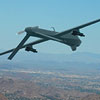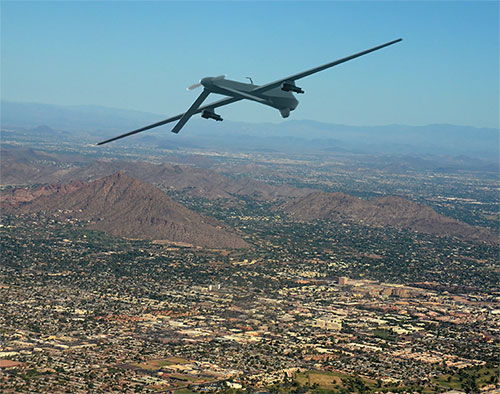
Dilemma Over Drone Strikes Against American Citizens
- By Ginger Hill
- Feb 11, 2014
Seems U.S. officials are in a true state of dilemma when it comes to an American citizen who is also a member of al-Qaeda. Should the Obama administration kill this man, who is actively planning attacks against Americans overseas, with a drone strike? Or, should the administration legally build a case against him?
 Watching this suspected terrorist since last fall, officials have identified him as an “al-Qaeda facilitator,” who has been directly responsible for deadly attacks against U.S. citizens in oversea locations using IEDs. In some people’s opinion that’s enough to take action; but this alleged American terrorist is quite intelligent and has seemingly outsmarted the American government.
Watching this suspected terrorist since last fall, officials have identified him as an “al-Qaeda facilitator,” who has been directly responsible for deadly attacks against U.S. citizens in oversea locations using IEDs. In some people’s opinion that’s enough to take action; but this alleged American terrorist is quite intelligent and has seemingly outsmarted the American government.
This suspected terrorist is well-guarded in a fairly remote location, living in a country that refuses U.S. military action on its soil, rendering American officials helpless. Not only that, Obama’s new policy states that American suspected terrorists overseas can only be killed by the military, not the CIA. So, as CIA drones watch in wait as this man plots and carries out terrorist activities against American citizens, their hands are tied.
A senior administration officer, however, has indicated that the president could make a onetime exception, allowing the Pentagon to take action against this American under the Authorization for Use of Military Force, a resolution passed by Congress a week after 9/11 to target al-Qaeda, since the administration has ruled him an enemy combatant.
But, governmental departments are divided and have requirements to fulfill:
- Defense Department - questioning whether this man is dangerous enough to allow a potential domestic fall out of killing an American without charging him with a crime or trying him, along with the potential of international fallout with the country in which the suspect is residing.
- Justice Department - required to prove that killing the suspect through military action is “legal and constitutional.”
- Senate and House – blocked funding to transfer CIA’s stealth RQ-170 drone fleet to the Pentagon.
- Lawmakers – arguing that the CIA has more experience flying drones, so Pentagon should not get involved.
Through all this drone debate, a chilling fact: The U.S. Justice Department has yet to begin to build a case against this alleged terrorist, so it looks like taking any kind of action won’t happen anytime soon.
About the Author
Ginger Hill is Group Social Media Manager.